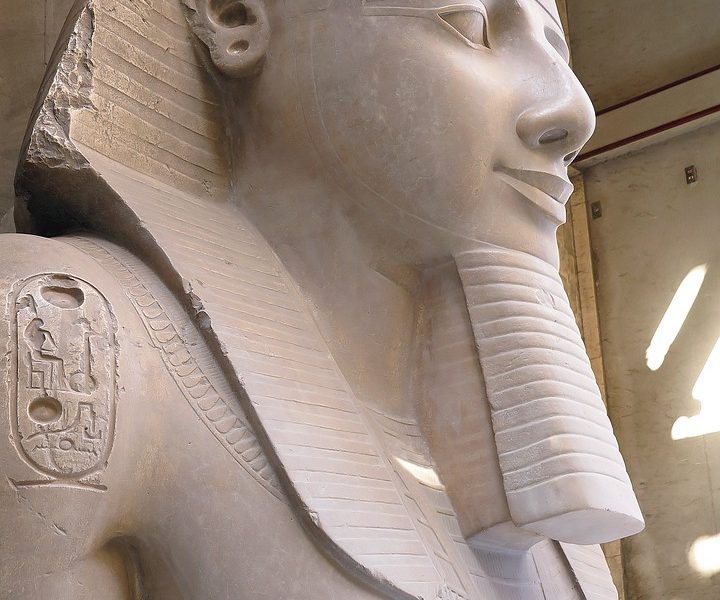Memphis and Saqqara
One of the most important place in Cairo Memphis and Saqqara Pyramids
Founded 5,000 years ago, Memphis is the first capital of a united Egypt.
Built of mud brick for the living, little of it remains, and it lies mostly swallowed by the mud of the west bank of the Nile, 20 km south of Cairo.
But overlooking Memphis, on the edge of the desert plateau at Saqqara, the ancient Egyptians buried their noble and royal dead in imperishable tombs of stone. Here at Saqqara is the world’s first pyramid, the Step Pyramid built by King Zoser and his great architect Imhotep. Within decades of this achievement, yet vaster and more perfect pyramids were constructed to the north at Giza, among them the Great Pyramid of Cheops, which even today is the most massive monument in the world.
Memphis
Memphis probably began as a fortress by which Menes controlled the land and water routes between Upper and lower Egypt and kept the conquered inhabitants of the Delta in subjection. By the III Dynasty, it must have become a sizeable capital, as the Saqqara necropolis suggests, but it may not have been fixed.
The IV Dynasty pharaohs built their pyramids to north at Giza and might well have had their palaces near too. One can imagine Memphis developing in stages like Arab Fustat and its successors, decamping northwards.
Whether it was Mediterranean breezes that attracted, or the growing dominance of the sun cult at Heliopolis, so closely associated with pyramid development, is not known. By the VI Dynasty, however, the old site of Memphis had been reoccupied, its attraction the venerable sanctuary of Ptah.
From the court of Pepi and its associated monuments came the name Men-nefru-Mire, the Beauty of King Mire (Pepi), later abbreviated to Menfe, in Greek Memphis. Although no longer the capital, in the New Kingdom Memphis rivalled Thebes in grandeur, embellished in particular by Ramses ll’s mania for building. During the 5th century BC when the Persians ruled Egypt from here and Herodotus visited the city, it was a great cosmopolitan centre, a foreshadowing of Alexandria, with many Greeks and Jews, Phoenicians and Libyans among its population, as full of oriental spectacle as Cairo is today. Herodotus, in his hydrology of Egypt, which fascinated him, wrote that ‘when the Nile overflows, the whole country is converted into a sea, and the towns, which alone remain above water, look like islands in the Aegean.
At these times water transport is used all over the country instead of merely along the course of the river and anyone going from Naucratis to Memphis would pass right by the Pyramids….
The priests told me that it was Menes, the first king of Egypt, who raised the dam which protects Memphis from the floods… On the land which had been drained by the diversion of the river, King Menes built his city and afterwards on the north and west sides of the town excavated a lake, communicating with the river.’
The decline of Memphis began with the founding of Alexandria and the final blow was struck when the Arabs founded Fustat as their capital. Even so, as late as the -12th century Abd el Latif could write that ‘the ruins still offer, to those who contemplate them a collection of such marvellous beauty that the intelligence is confounded, and the most eloquent man would be unable to describe them adequately’. But towards the end of the Mameluke period, the dikes around Memphis fell into disrepair and at every inundation, the level of the ground was raised.
Saqqara Pyramids
Saqqara is home to several pyramids, including the famous Step Pyramid of Djoser, which is one of the oldest stone structures in the world. Here’s a brief overview of the pyramids at Saqqara:
Step Pyramid of Djoser
Built during the 27th century BC, this pyramid was the first to be built in Egypt and is considered the oldest stone structure in the world. It was designed by the famous architect Imhotep and served as the final resting place of the pharaoh Djoser.
Pyramid of Userkaf: This pyramid was built during the 24th century BC and is believed to be the final resting place of the pharaoh Userkaf. It is relatively small and was constructed from limestone blocks.
Pyramid of Teti
This pyramid was built during the 23rd century BC and is the final resting place of the pharaoh Teti. It is known for its beautiful pyramid texts, which are inscriptions that were believed to help the pharaoh on his journey to the afterlife.
Pyramid of Merikare: This pyramid was built during the 23rd century BC and is believed to be the final resting place of the pharaoh Merikare. It is relatively small and has not been fully excavated.
Pyramid of Unas
This pyramid was built during the 24th century BC and is the final resting place of the pharaoh Unas. It is known for its well-preserved pyramid texts, which are inscriptions that were believed to help the pharaoh on his journey to the afterlife.
These pyramids are all located within the Saqqara Necropolis and can be visited as part of a guided tour or independently. They offer a fascinating glimpse into ancient Egyptian history and culture.
We organize a day tour to visit the Pyramids of Giza Saqqara pyramids and Memphis City




